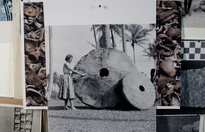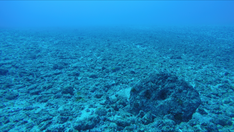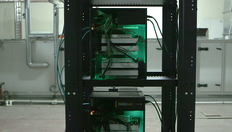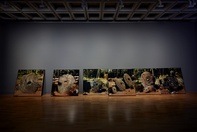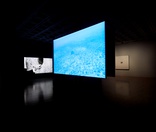Nicholas Mangan
Melbourne
2017
Displayed 2017 at Art Gallery of New South Wales
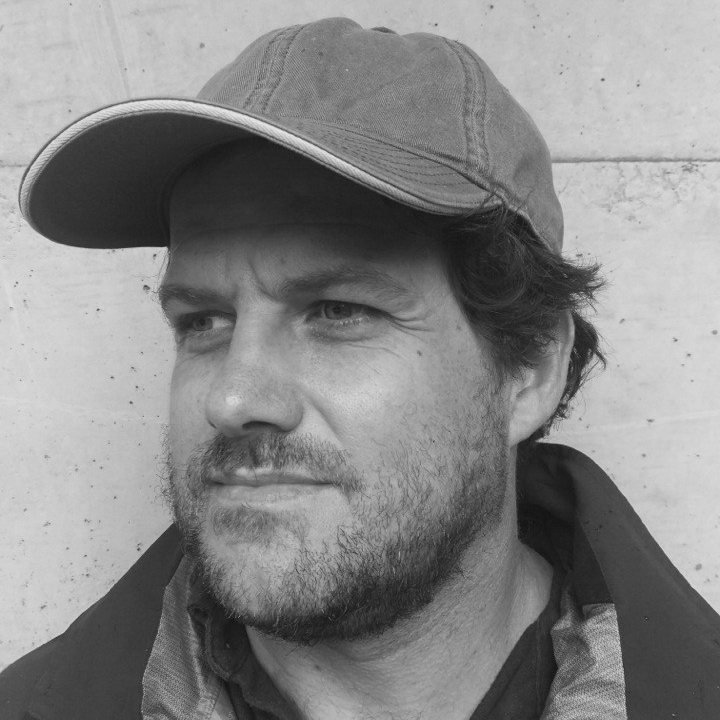
Nicholas Mangan
Born 1979, Geelong, Victoria. Lives and works Melbourne
Nicholas Mangan’s practice is driven by the desire to make sense of the world by unpacking the histories and possible narratives that surround specific contested sites and objects. This investigation explores the unstable relationship between culture and nature. A tropical mine in a conflicted state whose local inhabitants used coconuts as fuel in their resistance, a strip-mined island nation in bankruptcy that took refugees in return for payment from the Australian Government, and a geological sample of the earth’s oldest crust have each lent material to this process of dissection and reconfiguration. By rerouting each of these stories, new forms and latent narratives are unearthed.
Artist text
by Jan Bryant
I have known what the Greeks do not know, incertitude. (1)
In a short story by Jorge Luis Borges, a once-clandestine lottery eventually infiltrates every aspect of Babylon’s civil, judicial, economic and political life. Chance, error, luck, failure, loss and success will determine its citizens’ place in society, their wealth, their behaviours, their death. What began as a secret exchange between the poor and their barbers undergoes conceptualising, abstracting and ritualising processes organised around metaphysical systems of thought. To envisage Babylon otherwise would be an impossible utopia, since the lottery was now enmeshed in every part of the state’s fabric and thinking. (I assume a relation is to be drawn here between Babylon and the babble of tongues, which brings about the state’s eventual destruction.)
A connecting theme of Nicholas Mangan’s body of work is the unveiling of the concrete that sits under a muddle of proliferating abstractions. Mining as a supposed economic good is one example. Progress in Action is a 2013 work that shows how the journey from raw materials to commodities hides expansionist and colonialist violence. Mangan reinstalled functioning machines and generators, originally developed as a tool of resistance against Bougainville Copper Limited, in a gallery to produce biofuel made from coconuts. (2) What frequently gets obfuscated in systems of abstraction – in this case, mining – is the lived reality that gets caught in its net.
In Limits to Growth (2016–) Mangan cheekily connected visitors to the rhythm of Bitcoin mining, installing the software in the gallery basement throughout the duration of the exhibition. (3) Alongside this was reference to the stone currency of the Micronesian island of Yap, large hand-carved limestone objects named Rai that continue to form a small part of Yap’s exchange system. A single Rai is an enormous and cumbersome object. It reflects the value of the labour that has gone into its carving, and we can sense its scale and the difficulties involved in its transport and exchange. We can see its beauty. We can be moved by stories of its shipwreck, sitting between islands, remembered, its value persisting at the bottom of the sea.
Money has existed as a metaphysical challenge throughout modernity. As the newest form of exchange, Bitcoin stands at the other end of the dematerialising of money through history: as data, as cashlessness, it now touches the world only as a system of numerical signs. (4) In 1900, at a time when Georg Simmel undertook his study of money, it was still represented by hard currency. And yet its metaphysical complexities were nonetheless rich. Simmel concluded that money was the ‘reification of the general form of existence’; (5) it had become a symbolic register of what it is to exist in the world.
As a footnote, the Bitcoin mining software that Mangan installed in the gallery also registered Bitcoin’s slow and economically unviable accumulation. At points during the exhibition, depending on market rates, Mangan purchased high-quality prints of the Rai with his newly mined Bitcoin. This aspect of Mangan’s work, this turning of a Rai into an image of a Rai, is a reminder that art, despite its best efforts, begins and ends as a form of abstraction.
Notes
(1) Jorge Luis Borges, ‘The lottery in Babylon’, in Labyrinths: selected stories and other writings, New Directions Publishing Corporation, New York, 1962, p.40.
(2) The exhibition Nicholas Mangan: Limits to Growth was presented over July–September 2016 at Monash University Museum of Art, Melbourne.
(3) As part of an earlier manifestation for the exhibition Nicholas Mangan: Limits to Growth.
(4) To preserve its value, Bitcoin mining production is being halved; see www.bitcoinblockhalf.com.
(5) Georg Simmel, The philosophy of money, 3rd edn, trans. Tom Bottomore and David Frisby, Routledge, London and New York, 2004, p.127.

